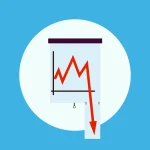October 20, 2023 – In just six years, the Croatian labor market underwent a tectonic shift in which the number of foreign workers increased from 7,800 to around 130,000 employees, making up eight percent of the Croatian workforce.
In some branches, writes Poslovni, foreigners make up a fifth of the employees, and it is estimated that they contribute between 0.5 and one percent to the nominal GDP. This had no small impact on real growth, although it is difficult to calculate exactly how much.
If productivity increases…
Speaking about the trends in the labor market, a segment that has been the focus of the European Central Bank due to the repercussions of (stubborn) inflation, Governor Boris Vujčić warned on Thursday in Rovinj that “we need a well-thought-out, good immigration policy, and we have to agree on what we want in the future.” There is still a chronic shortage of workers today. If Croatia reached the European average labor force participation rate of 75 percent, coming from today’s 70 percent, the market would lack 120,000 jobs.
“If we had managed to activate the population, we would have significantly less migration, but even if we take retirees and foreign labor out of the equation, the potential of the inactive population in Croatia is very limited. We have to look for other solutions, partly through the activation of retirees, it would be better if the retirement age were raised; and partly through immigration”, Vujčić said at the Challenge of Change conference of the Zagreb Stock Exchange and Pension Funds.
With the expected increase in life expectancy, changes in the age structure, and the decline in the population, the Croatian workforce will decrease by up to 400,000 people in the next 20 years. For the sake of illustration, this is a third of today’s total number of employees. This will be a pressing problem for employers, who are already underlining the labor shortage, and for the economy as a whole. In such an environment, and it is similar in the EU, the labor market is very resilient. In the EU, there is a shortage of construction workers, developers, roofers, psychologists, and drivers. On the other hand, there is a surplus of secretaries, photographers, gardeners, sociologists, and travel agents.
There are about 100,000 unemployed people in Croatia. In June, the number was even lower, and the last time this happened was in 1982. “Salaries follow productivity growth very well. The question is, how long can employment keep rising? It will rise, but certainly not at this rate. On average, a 1 percent GDP growth implied an employment rise of around 0.7 percent,” said Vujčić. “If productivity increases, we will all be richer, and then we can start thinking about universal income,” he adds.
Category A victory
Looking back on 2023, the head of the Administrative Council of the Croatian Agency for Supervision of Financial Services, Ante Žigman, said that the year exceeded expectations, and the valuations were “much higher than expected”. “Caution is never enough, but as far as the introduction of the euro is concerned, he did one thing that is difficult to measure, though it can be seen indirectly on the portfolios.
The currency risk of EUR 20 billion of pension fund assets has been completely eliminated. This is also reflected in the rating, and now we are waiting for the transition to the highest category A”, said Žigman. As far as pension funds are concerned, the head of Hanfa said that category A “beat inflation and achieved a real return.” “We expect that this will also be the case with the B category, C category remains, as it is of slow dynamics, but it has also shown progress. Viewed cumulatively, returns are still positive in nominal and real terms,” he said.
He assessed the issuance of national bonds as an “important event for everyone” because of portfolio diversification, even though everyone “didn’t have the participation they might have wanted.” “We are expecting the issuance of treasury bills that will also be available to everyone,” Žigman said.











